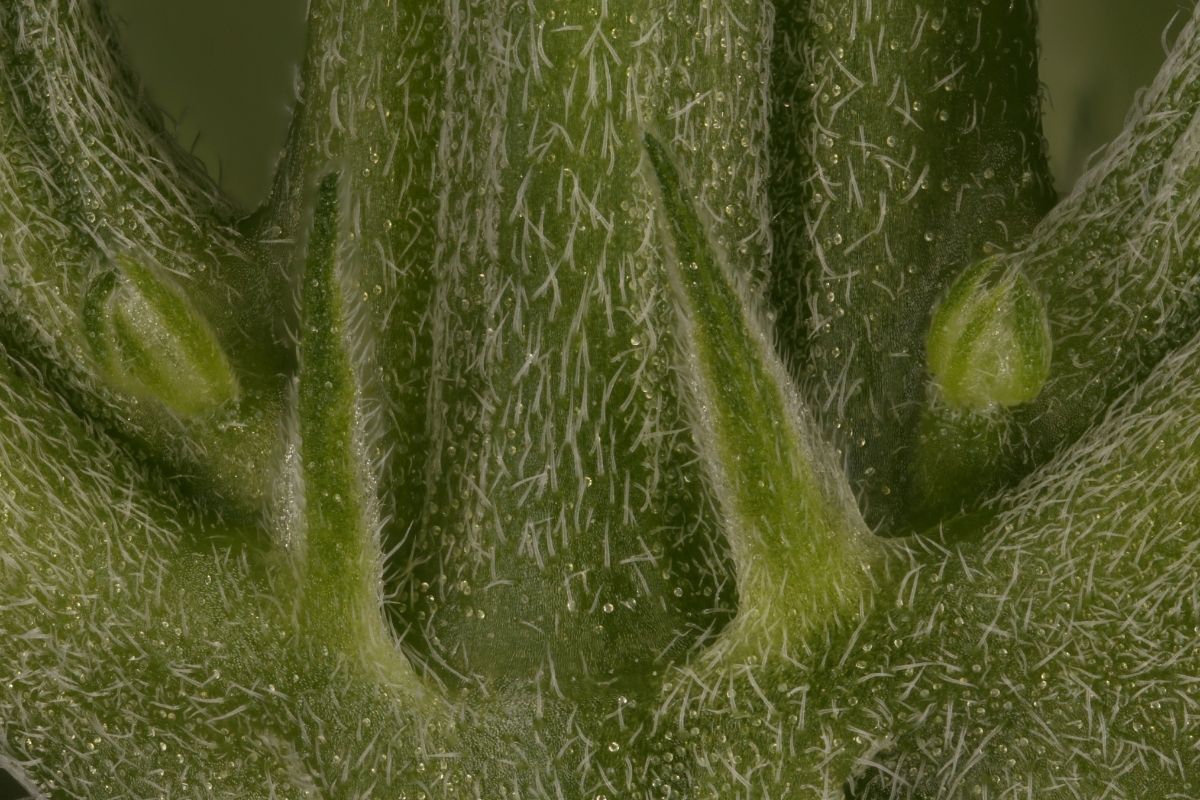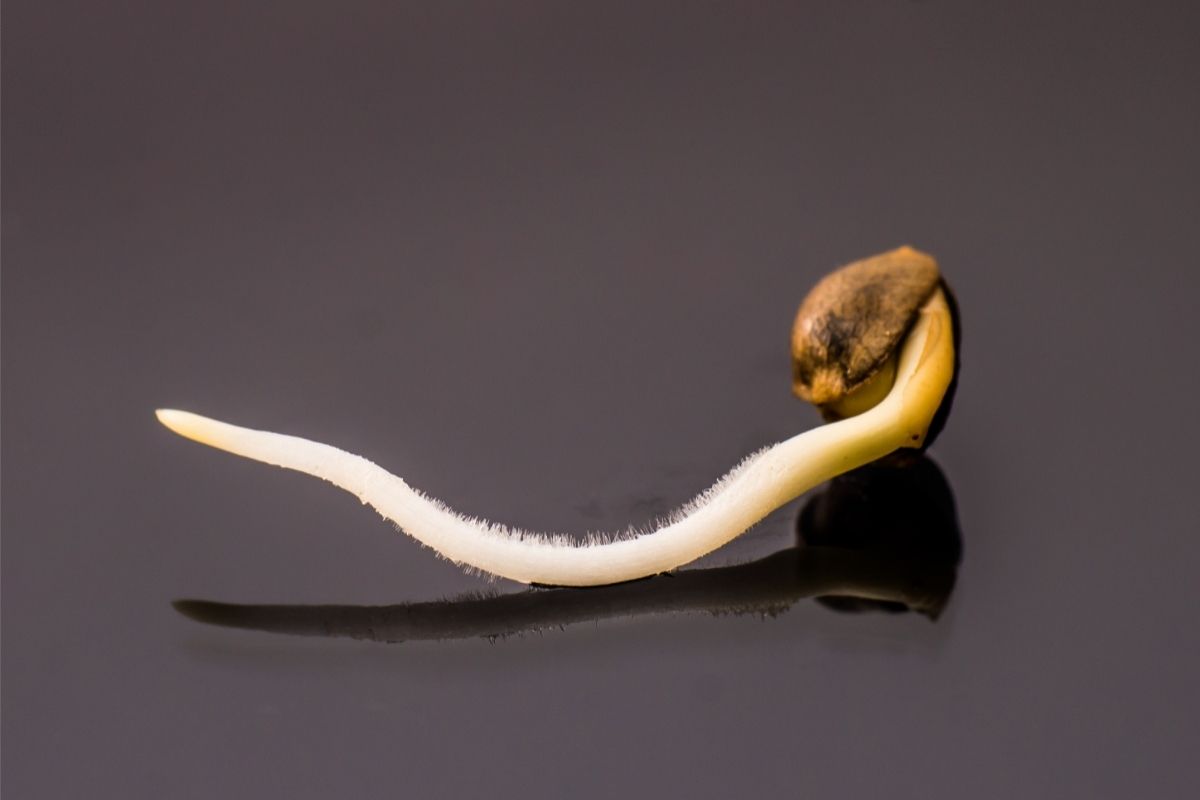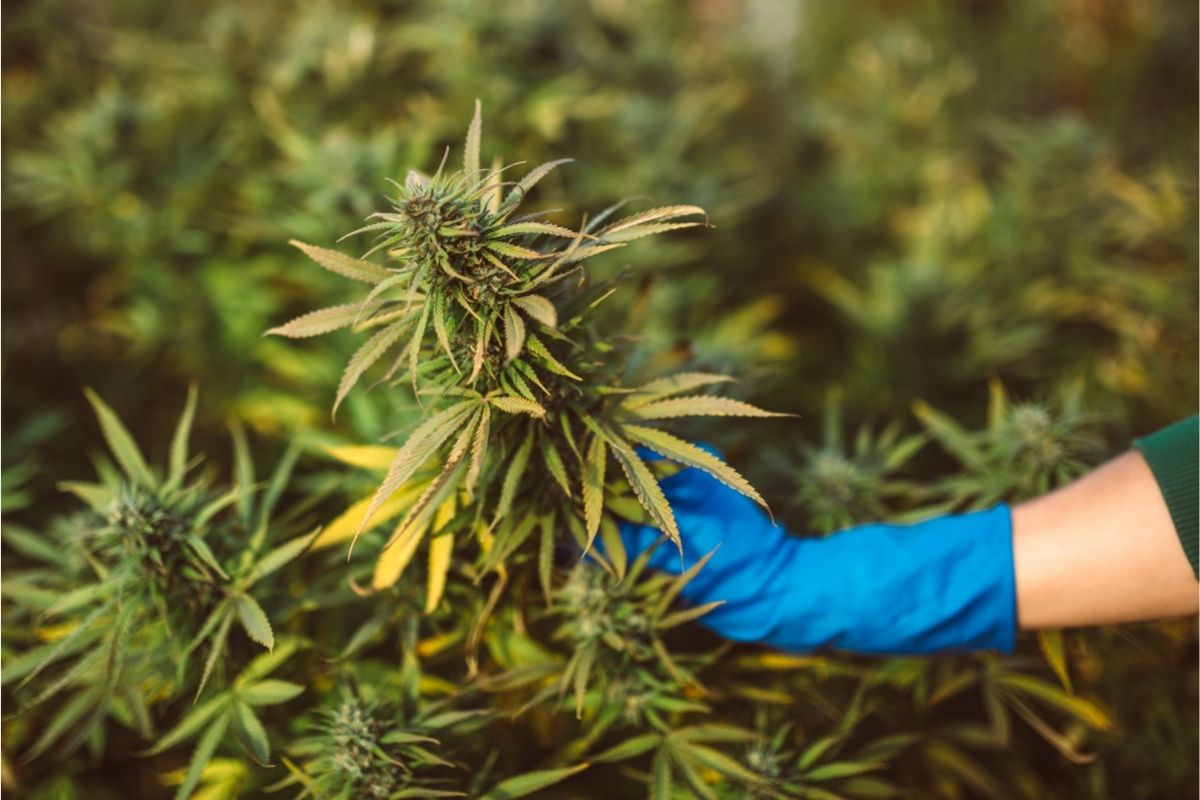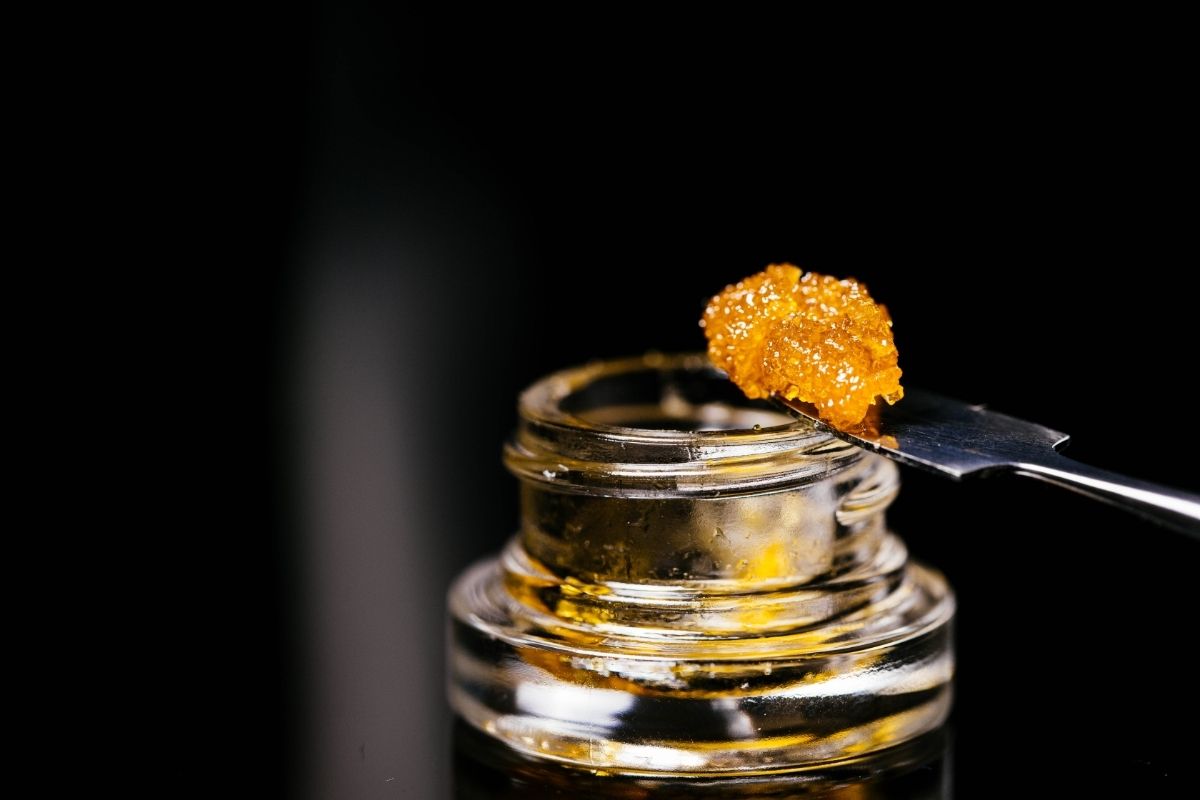People have been experimenting with growing weed for centuries, and it has become a fine art.
The plants themselves are notoriously difficult to maintain and care for. Because of this, there is a great deal of patience which is required from anybody attempting to grow weed.

Growing weed hydroponically is becoming more and more popular. Individuals are growing their favorite strain of pot indoors, under controlled conditions.
This guide will help you learn how to grow your own cannabis in a hydroponic system, as well as the amount of upkeep which is needed.
Hydroponic Weed Defined
Hydroponic weed systems are becoming more popular. Individuals are setting up their own growing system which allows them to grow and cultivate weed indoors.
Sand, gravel, or water with added nutrients are some of the most popular choices when it comes to growing hydroponic weed.
This is because it is much easier to control than compost or soil, and is less likely to attract pests.
By definition, hydroponic growing is the process where plants are grown without soil. Nutrient-rich water is the most popular alternative.
The nutrients come from a combination of fertilizers, and minerals that have been added to the water.
These nutrients are then absorbed by the plant roots and used for growth.
A hydroponic setup allows you to control everything about the environment around your plants.
You can adjust temperature, humidity, light intensity and more in order to achieve the best results for you and your plants.
Hydroponic systems are an excellent choice for indoor growers who want to avoid using pesticides on their crops.
They also allow you to grow larger quantities than traditional methods. If you’ve never tried growing marijuana before, this method may be perfect for you. It’s easy to set up and maintain, and it requires very little space.
Growing Systems
Wick System
The wick system is a great option for beginners who are less familiar with hydroponic growing. This is because it is easier to set up than other methods, and has less moving parts to think about.
It is an ideal system for smaller plants that will not absorb the nutrients faster than they are being supplied.
Nutrients are fed through a wick made out of yarn or cotton, and the idea is that the plants will absorb them when required. Because this isn’t the fastest method or most efficient, the wick system is not recommended for large scale growing.
It is usually better to use this for personal growing when there are fewer time sensitive pressures such as retail demands.
Drip System
This is one of the most popular growing systems among hydroponic weeds. The drip system usually features a tube that slowly administers nutrients to the plants underneath.
Because this involves supplying nutrients to the tops of the plant, the roots are typically drip-fed too.
Timers are an essential part of the drip system, in order to prevent your plants from getting too much or not enough nutrients. With this hydroponic system, there is more careful checking and monitoring required.
The pH shifts will need to be used to adjust the nutrients that are fed into the system.
Ebb And Flow System
Another system which can generate high quality results on the whole is the ebb and flow hydroponic growing system. By flooding the growth trays with nutrients, plants can take everything that they need.
The rest of the nutrients will flow back into the reservoir and wait for the next timer to go off.
In spite of the simplistic concept, there is some regular maintenance which is essential to keep the ebb and flow system working correctly.
For example, a pump is submerged along the growth tray to make sure that the roots are correctly absorbing the nutrients and oxygen consistently.
While this system follows a basic framework, it relies heavily on electricity and is more prone to power outages.
This can lead to issues with the pump and timer failures, which could negatively affect your harvest.
Deep Water Culture
As the name suggests, deep water culture involves submerging the roots of each plant in water which is oxygenated using air pumps, and adding the correct amount of nutrients to the water.
Due to the relatively simplistic concept of this hydroponic system, the deep water culture is a popular choice for beginners, or growers who are more concerned with their total spend.
Although the water is oxygenated, it is essential that the roots are not being left in the water constantly.
This can lead to damage and even rotting. Growers using the deep water culture method need to make sure they allow some dry time for the roots to properly oxygenate.
Nutrient Film Technique
The last method commonly seen in hydroponic weed growing is considered to be a more advanced system.
It is slightly more complicated and technical to set up and maintain, which is why the nutrient film technique is not recommended for beginner growers.
The nutrient film technique follows a similar fundamental concept to the ebb and flow system, with some differences.
Plants benefit from a constant supply of nutrients being fed into the growth tray before the excess goes back into the reservoir.
While the ebb and flow system submerges the entire plant, the nutrient film technique usually covers the tips of the roots only. This allows them to get plenty of oxygen and nutrients as well.
Most of these systems are seen tilted at slight angles to promote flow of nutrients and use gravity to the plants’ advantage.
One of the main reasons why this system is considered to be more suitable for experienced growers is because there is a great deal of maintenance which needs to be done. In order to create a successful hydroponic system using the nutrient film technique, you will need to think about everything.
This includes protecting the roots from light exposure and preventing them from drying out, avoiding power outages, and general day-to-day hands-on maintenance.

Hydroponic Weed: Benefits
It is easier than ever to grow weed indoors thanks to hydroponic systems. This means that you will not need to worry about the weather conditions as frequently.
In turn, this can allow growers much more control over the nutrients, temperature, and other growing conditions.
Being able to set up your hydroponic weed indoors without soil also means that there is a much lower risk of pests.
Insects and other unwanted creatures taking a bite are less likely to be an issue.
This means that you will not need to worry about using insecticides or pesticides, or soil-borne creatures which can damage your crop.
Because growers have much more control over the conditions, hydroponic weed can actually grow faster than regular weed that is grown outdoors or in soil.
Hydroponic weed can be harvested as many as six times annually when it has been carefully maintained.
Hydroponic weed also take up a lot less space than traditional growing systems. This means that you can grow more in the same amount of space if you want to.
The higher amount of control makes it more likely that you will grow high quality weed with a hydroponic system.
Hydroponic Weed: Drawbacks
Growing outdoors has some advantages over hydroponic weed systems. The main one is that it is much more budget-friendly to set up a garden which is more exposed to the elements.
Certain individuals who want to grow weed are more likely to find it an inefficient use of money to use a hydroponic system.
In addition, there is a great deal of knowledge about hydroponic systems and how to control the conditions which is necessary to create a successful growing system.
This can be a challenge to some who don’t have as many learning resources available to them.
There is also a reliance on water systems instead of soil. While this reduces the risk of pests significantly, there is a much higher chance that your plants will get water-borne diseases.
These can be incredibly difficult to control once they emerge, and it is important that you are aware of these ahead of time.
Water-borne diseases can have a highly detrimental effect on your weed, and it is worth learning about how you can avoid these within your hydroponic system and what kind of signs to look out for.
Another disadvantage of hydroponic systems is that they typically rely on electricity to maintain temperatures, control timers, and other essential resources.
Not only can this lead to an increase in your monthly utility bills, but your plants are more vulnerable during a power outage.
It could be worth setting up a backup power supply, or using a system that doesn’t rely on electricity, if you are concerned about the additional costs or if your electricity supply is limited.
Frequently Asked Questions
What Minerals Are Essential For A Successful Hydroponic System?
There is a lot of talk about adding minerals to weed plants that will make sure they grow correctly, but what actually are these?
Some of the key nutrients recommended for any hydroponic system are phosphorus, magnesium, copper, zinc, iron, nitrogen, potassium, manganese, boron, calcium, and chlorine.
Try to start off with small amounts before experimenting with different combinations of minerals to see how it affects your plants.
Does Hydroponic Weed Taste Different?
Yes, it actually has a slightly different taste to organic weed or weed that has been grown in soil. The flavors are less potent overall, which can impact the taste and overall experience.
In order to combat this, some growers have experimented with adding more sulfur to their growing systems. This can be a useful way of making your weed have a more potent flavor to it.
What Equipment Is Necessary For A Hydroponic System?
While some of the equipment can vary depending on the type of system you choose to get started with, most hydroponic systems will need some way of checking the temperature, humidity, and pH.
It is also essential to find a high quality water pump, air pump, reservoir tank, and a 3-5 gallon bucket. A growing table can also be an ideal way of getting started with your hydroponic growing system.
Summary
Hydroponic growing systems are complex and require a great deal of maintenance and care to get set up and generate high quality weed at the end.
When the system is working correctly, however, these systems can be a great way of growing weed because you will grow more within a smaller space.
Hydroponic weed has a slightly less potent flavor, which is why it’s important to look into the nutrients that can be added and the growing system as a whole.
- Quotes From The ‘Reefer Madness’ Period That Show How Far We Have Come - May 17, 2022
- 10 Tips On How To NOT Smell Like Weed - May 17, 2022
- Tropical Punch Strain Review: Everything You Need To Know - May 17, 2022








